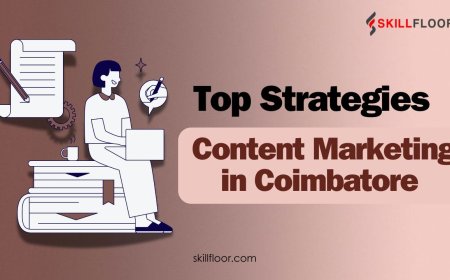Best Practices to Reduce Website Bounce Rate
Discover practical strategies to lower your website's bounce rate, improve user engagement, and boost conversions through smart design and content tactics.

Ever wonder why visitors come to your website and then immediately leave? It's called a bounce. When your page doesn't load quickly, seems unclear, or doesn't match their expectations, it occurs. You can improve your SEO and encourage people to remain longer by keeping things simple, fast, and helpful.
Search engines are alerted when users leave your website too soon. It indicates that something isn't functioning correctly. People feel more welcome when there is a clear message, a clean design, and a quick load time. Similar to a physical business, a positive first impression builds trust, which may significantly improve your SEO.
What is the Bounce Rate?
A bounce occurs when someone comes to your website and then leaves without clicking or seeing any more pages. It indicates the visitor was either disinterested or failed to locate what they were looking for. Something on your website may need to be clarified or modified if the bounce rate is significant.
The percentage of visitors who leave after just reading one page is known as the website bounce rate. It's an excellent tool for assessing how effectively your website maintains user engagement. Don't be alarmed if your bounce rate is high; it simply indicates that you have space to improve the usefulness of your content and the appeal of your design.
Understanding Why Bounce Rate Matters
-
Shows Visitor Interest: The bounce rate gives your insight into how interested visitors are in your content. Quick departure indicates they didn't discover what they were looking for. Improved engagement and SEO success are supported by a decreased bounce rate.
-
Impacts Search Results: When people leave a site too quickly, search engines notice. A high bounce rate might be an indication of a bad experience. This might make it more difficult for visitors to locate your website online and damage your SEO ranking.
-
Checks Content Match: Visitors will leave if your page isn't what they expected. That damages credibility and lowers SEO value. Make sure your content is in accordance with the ad, link, or headline that they clicked on.
-
Improves Your Content: Checking your writing is necessary if your bounce rate is high. Revise it to make it easier to read, clear, and helpful. Excellent content promotes improved SEO and retains visitors on your site.
-
Shows User Behavior: You can see how visitors utilize your site by looking at the bounce rate percentage. If most users quit quickly, there's a problem. By fixing it, you may increase user retention and develop search engine optimization growth.
-
Supports Better Design: Your site will lose visitors if it appears disorganized or loads slowly. A sleek, flowing design maintains interest. Over time, this assists with greater SEO performance in addition to increasing bounce rate.
What is a Good Bounce Rate? And What's a Bad One?
|
Category |
Good Bounce Rate |
Bad Bounce Rate |
|
Overall Website Performance |
Usually below 40%, shows users are exploring your site. |
Above 70% may show people are leaving too soon. |
|
User Engagement Level |
High—visitors are reading, clicking, and staying longer. |
Low—visitors leave without reading or clicking anything. |
|
Search Engine Signals |
Positive—signals to search engines that users are satisfied. |
Negative—may tell search engines your content isn’t helpful. |
|
Content Relevance |
Strong—content matches user intent and expectations. |
Weak—content may be confusing or mismatched with keywords. |
|
Page Design and Usability |
Clean, fast-loading design encourages users to stay. |
Poor design or slow load times push users away. |
|
Conversion Potential |
Better chances to convert users into leads or customers. |
Harder to turn visitors into customers or subscribers. |
How to Analyze and Interpret Your Website’s Bounce Rate
-
Look at Overall Numbers: Check the average bounce rate of your website by logging into Google Analytics. This provides a brief overview of how users interact with your content or quickly depart.
-
Focus on Specific Pages: Certain pages might function better than others. Prioritize high-bounce pages. By addressing places where consumers quickly abandon your site, this helps you get better outcomes from your digital marketing.
-
Check Traffic Sources: Examine the sources of your traffic: email, social media, and search. The efficacy of digital marketing and bounce rate may be impacted by some sources that are bringing in the incorrect visitors.
-
Test on Different Devices: Sometimes bad layout or speed cause mobile users to bounce more. Examine your website's performance on various devices to make it more user-friendly and increase the effect of your digital marketing.
-
New vs Returning Visitors: When your site is unclear, new visitors tend to leave more quickly. Stays of more time are maintained by returning consumers. This indicates the degree to which your digital marketing is attracting new users.
-
Watch User Behavior Visually: Tools such as Hotjar display the locations of user clicks and drops. You can enhance page design and maintain visitor engagement with these pictures, which is crucial for effective digital marketing initiatives.
A Complete Guide to Reducing Website Bounce Rate
1. Speed Up Your Website
When a website loads slowly, users will rapidly abandon it. Delays can erode confidence since people expect pages to load quickly. By making your site faster, you can keep people interested and lower the likelihood that they will leave straight away.
-
Reduce load times without sacrificing quality by using browser caching and compressing pictures. All users will find your site speedier and more effective as a result.
-
Eliminate any extraneous plugins or code that causes your website to lag. Your sites will load more quickly and function better on all devices with cleaner code, which also helps improve your Website Ranking.
Why it Matters:
Users are more likely to trust a brand that loads quickly. Speed shows professionalism and consideration. It's among the first things visitors see and keeps them on your website rather than causing them to leave.
2. Use Clear Page Headlines
The purpose of your page should be immediately apparent to visitors. A compelling title makes people feel as though they are at the proper place. By doing this, they become more interested and are more inclined to stay.
-
To attract attention, use strong, big fonts for headlines. People can easily and swiftly skim your material using clear typefaces.
-
To ensure it is noticed immediately, position the headline above the fold. The topic shouldn't need users to scroll in order to grasp it.
Why it Matters:
Users might feel more assured that they are at the proper place when headlines are clear. Visitors are more inclined to stick around and investigate if they grasp your message right away. It's an easy repair that has a significant effect.
3. Make Content Easy to Read
Reading lengthy passages of text can be challenging. To make reading easier, use headers, bullet points, and brief paragraphs. A straightforward, approachable writing style makes even a subject like a digital marketing course more interesting.
-
Use headers to divide the information into manageable chunks that allow people to quickly scan and navigate to the portions that are most important to them. Well-organized content seems lighter and prevents readers from feeling overloaded.
-
To draw attention to important information and provide readers with concise, easy-to-read data or advice, use bullet points. It enables consumers to find what they're looking for with minimal effort.
Why it Matters:
Visitors feel more at ease when they can read easily. Simple and well-structured material encourages visitors to remain longer. Their likelihood of reading more, clicking more, and coming back later for more content is higher.
4. Improve Mobile Experience
Many people use their phones to access websites. They'll leave if your website isn't responsive. To keep visitors interested, make sure your website functions properly on all screen widths and looks beautiful.
-
Make sure everything functions properly by testing your website on various smartphones and tablets. It's best to examine yourself rather than make assumptions.
-
Make use of responsive design to ensure that the layout is aesthetically pleasing and functional across all screen sizes.
Why it Matters:
These days, mobile devices account for the majority of visits. You will lose visitors quickly if your website is not mobile-friendly. Making your site mobile-friendly encourages visitors to remain on it longer and demonstrates your concern for them.

5. Keep Content Relevant Always
When the content doesn't meet their needs, they leave right away. Make sure the information you provide is up to date, helpful, and directly relevant to the reason they came.
-
Regularly update service pages or blog entries to reflect the most recent information and maintain user interest with original material.
-
Make your site seem helpful and worthwhile by concentrating on finding solutions to issues that matter to your readers and improve your visibility in search engine results.
Why it Matters:
Relevant information shows that you are aware of and responsive to the demands of your visitors. When consumers discover what they're searching for, they remain longer and are more likely to trust you, which naturally lowers bounce rate.
6. Add Internal Links Smartly
After reading, people will leave if they are unsure of what to do next. Link to additional pages they might find interesting. By doing this, you lower the bounce rate and retain visitors on your website.
-
Provide links to service sites or relevant blog entries that organically direct readers to further helpful content.
-
To ensure that readers know what to anticipate when they click, employ clear anchor language that explains what they will find.
Why it Matters:
Internal links direct readers to other content on your website. This increases involvement, maintains interest, and fosters trust. Over time, a linked site lowers bounce rate since it feels complete.
7. Use Simple Clean Design
Untidy designs might make users confused. People feel more at ease when websites have clear design, legible content, and straightforward navigation. When your website is visually appealing, users remain on it longer and interact with your content more.
-
Select understandable typefaces and muted colors to keep everything seeming seamless and inviting.
-
In order to keep your site from seeming overloaded, avoid clutter by keeping adequate white space between items.
Why it Matters:
The design is simple to use. People don't want to be sidetracked or look for stuff. A straightforward layout directs attention to your content, where it belongs. Further visits result from that.
8. Avoid Annoying Pop-Ups
Pop-ups can drive users away if they obstruct content or show up too fast. Keep them brief and strategically placed. Before displaying anything that may interfere with users' experience on your page, let them explore.
-
Delay pop-ups till consumers browse or spend time on page, so they aren’t inundated with messages straight away.
-
In pop-up messages, provide valuable data rather than just advertisements to avoid annoying users.
Why it Matters:
Pop-ups frequently seem intrusive. They can be helpful if done correctly. When properly timed and correctly designed, they enhance rather than detract from the user experience. That is essential to maintaining a low bounce rate.
Tools You Need to Monitor and Improve Your Bounce Rate
-
Google Analytics: This free tool displays the sites where visitors depart most fast, their origins, and their duration of stay. You may enhance the functionality of your website and have a better understanding of bounce rates.
-
Hotjar: Using heatmaps and session records, Hotjar illustrates how people navigate your website. Because you can see where users click, scroll, or drop off, fixing issues is much simpler.
-
Google PageSpeed Insights: It's all about speed. This utility checks how quickly your website loads on desktop and mobile devices. In order to decrease bounce from poor loading times, it also offers advice on how to speed up your sites.
-
Crazy Egg: A/B testing, heatmaps, and scrollmaps are all provided by Crazy Egg. You may experiment with alternative layouts and content to discover what attracts and retains people.
-
MonsterInsights: MonsterInsights integrates with Google Analytics to provide a bounce rate directly on your dashboard if you use WordPress. It's easy to use and provides you with immediate, useful traffic information.
-
Semrush: Semrush lets you observe where people are leaving your site and how well it does in search results. It's excellent for resolving SEO and content problems that can contribute to a high bounce rate.
Increasing the bounce rate of your website doesn't have to be difficult. Knowing what keeps people in and what drives them to leave is the first step. A better experience is produced by combining mobile-friendly design, quick loading times, clear information, and simple navigation. Visitors are more inclined to stay and even return when they are made to feel at home and can get what they need fast. Over time, minor adjustments, like changing your headlines or including useful links, may have a significant impact. Continue experimenting to see what works, pay attention to your audience, and concentrate on creating a site that is as friendly and useful as you can. A reduced bounce rate indicates that your website is functioning well and that users are interacting with it, so it's not just about the statistics.






























































